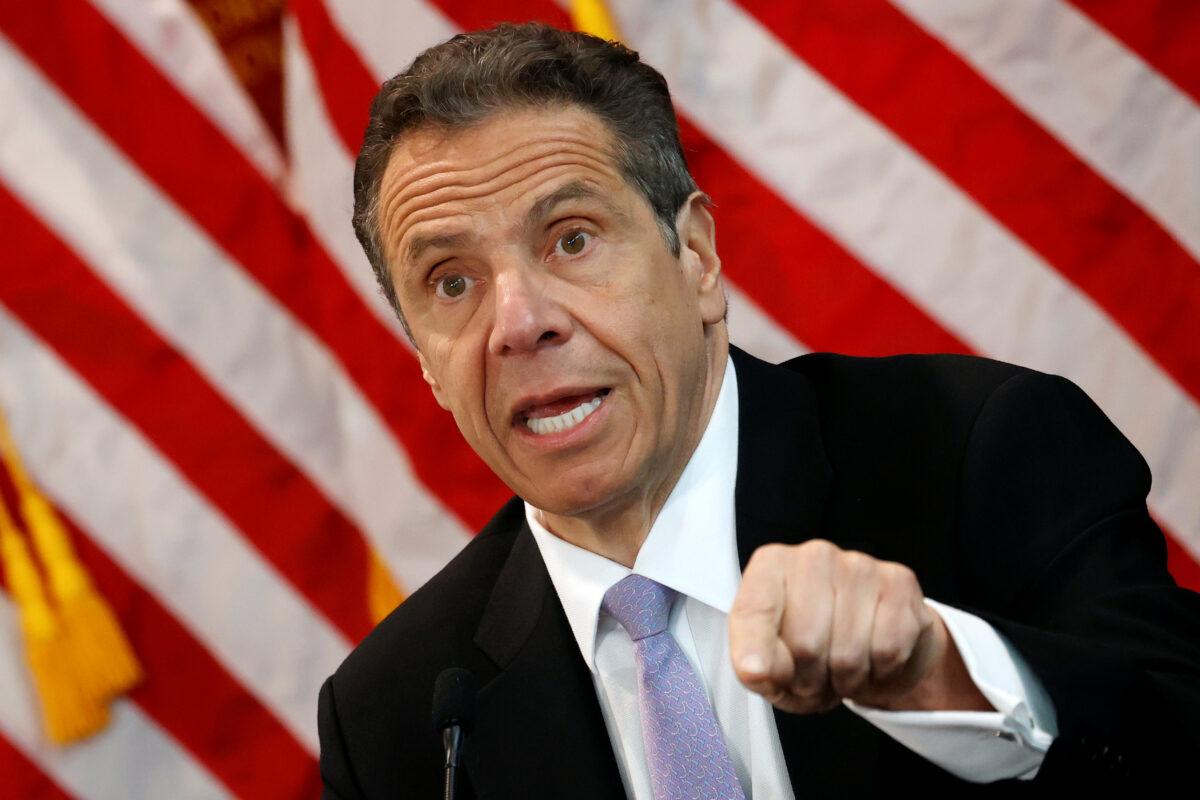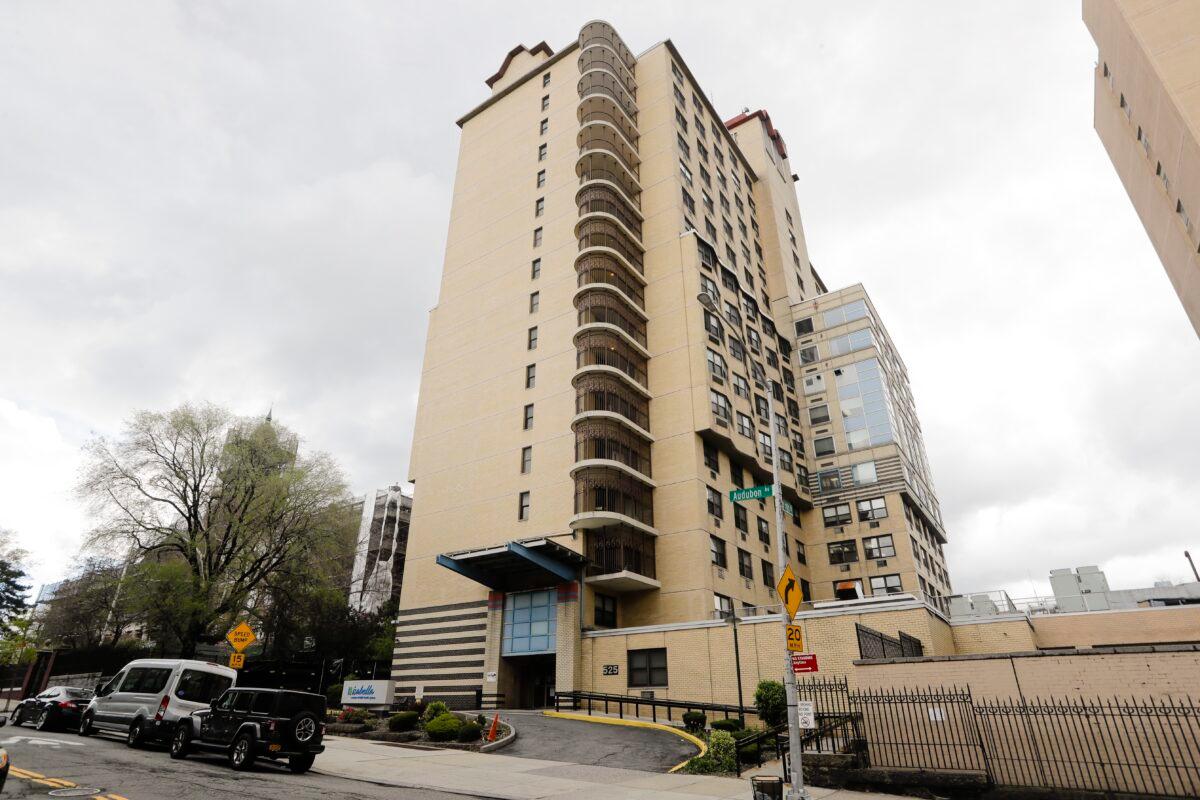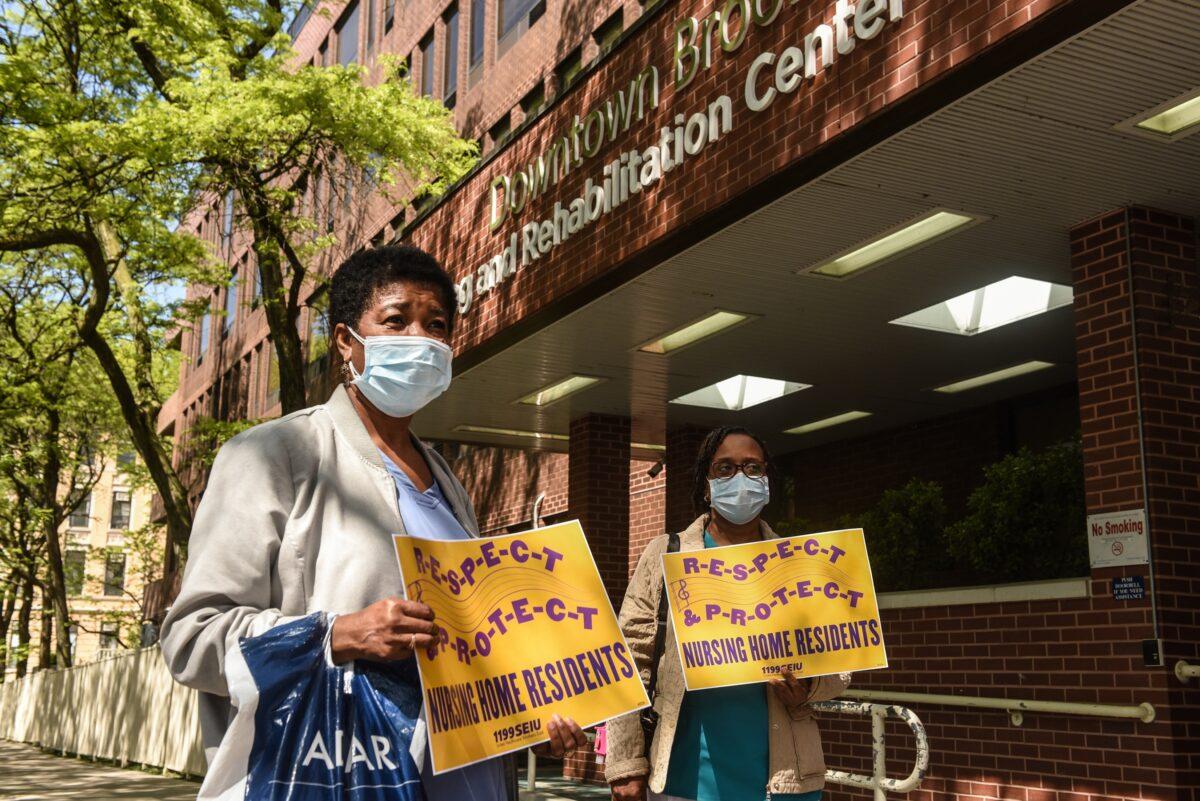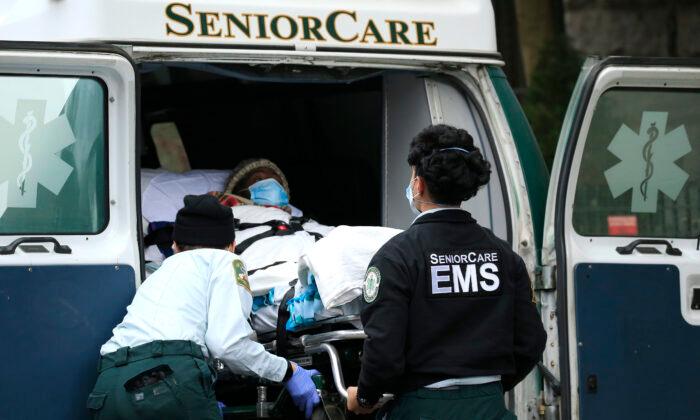More than 4,300 CCP virus patients were sent to New York nursing homes under a controversial state directive, according to a new count.
The guidance informed nursing home operators they couldn’t deny admission or readmission to a nursing home “solely based on a confirmed or suspected diagnosis of COVID-19.”
State officials “followed actions outlined in a March 13 memo from CMS that states ‘nursing homes SHOULD admit any individual they would normally admit to their facility, including individuals from hospitals where a case of COVID-19 was/ is present,'” the statement said.
“We’ve also restricted visitors, ordered workers to be temperature checked every day, tested twice a week, provided facilities access to 96,000 staffers, provided them with 13 million pieces of PPE and taken other actions to protect this vulnerable population,” it added.

Some data from the internal survey, the department told The Epoch Times, “was incomplete and needs further verification to ensure integrity.” Officials are trying to ascertain whether the residents who were admitted or readmitted to nursing homes under the directive were still contagious.
Federal data indicates that at 10 days after the onset of the new virus, “shedding is decreased and approaches zero,” the department stated.
State officials, including Democratic Gov. Andrew Cuomo, continue to insist that nursing homes all along could decline to take patients if they couldn’t properly care for them. But the directive lacked language to that effect.
The new tally indicates over 4,300 elderly patients who tested positive for the CCP virus were sent back to nursing homes.
Cuomo’s office didn’t return a request for comment from The Epoch Times.
The tally doesn’t include elderly residents who were rushed to hospitals and later died at those facilities.

Asked why he didn’t change the March 25 directive sooner, Cuomo told reporters on May 10: “I don’t know the March 25...”
He and other officials have repeatedly said nothing was done wrong.
“It was their obligation to inform. And it is their obligation to call the Department of Health and say, ‘You have to come get this person, I can’t care for them,” Cuomo said at the same press conference of nursing home operators.
Musing the next week that older people would have died no matter what was done, Cuomo said “nobody” would be prosecuted for any deaths from COVID-19. When told some relatives of elderly who died wanted accountability and alleged certain rules would have saved lives, he added: “I don’t—look, people rationalize death in different ways. I don’t think there is any logical rationale to say they would be alive today.”
Speaking to reporters Wednesday, the governor blamed President Donald Trump’s administration, claiming state officials utilized federal guidance to create their rules.

Seema Verma, administrator of the Centers for Medicare and Medicaid Services, said federal guidance stressed that operators who couldn’t properly care for patients shouldn’t accept them.
If nursing home operators couldn’t follow the guidance then the transfer “must wait until the patient is no longer subject to COVID-19 precautions, or the resident can be transferred to another facility that can provide the care,” Verma said in a statement.
A number of groups, family members, and officials opposed the order when it was first made.
The Society for Post-Acute and Long-Term Care Medicine called the mandate deeply concerning, stating in a resolution that “admitting patients with suspected or documented COVID-19 infection represents a clear and present danger to all of the residents of a nursing home.”
Jeffrey Nichols, part of the group’s executive committee, told the Associated Press: “the effect of that order was to contribute to 5,000 deaths.”
The order led to the infection of “a great number of people in nursing homes who had no business getting infected,” added John Dalli, a New York attorney who focuses on cases involving nursing homes.





